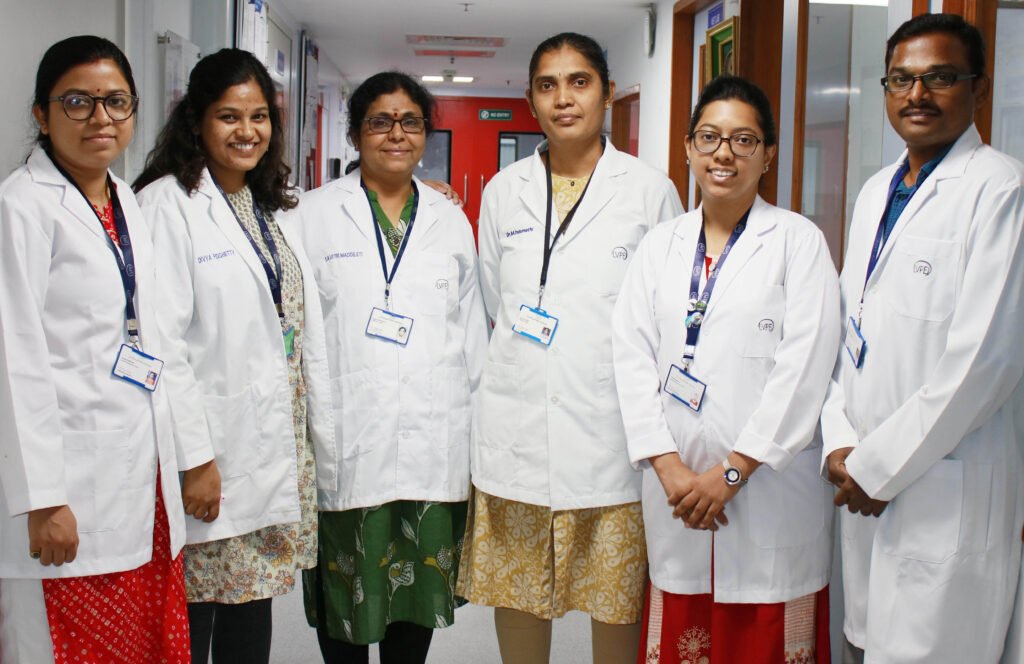Hyderabad, 1 July 2024: In a new paper published in Nature Communications, scientists from the Council of Scientific and Industrial Research – Institute of Genomics and Integrative Biology (CSIR-IGIB), New Delhi and the L V Prasad Eye Institute (LVPEI), Hyderabad, along with other national and international collaborators, present an enhanced CRISPR-Cas9 based genome editing system that is more precise and efficient than existing technologies. The system has high specificity, extended flexibility for genome coverage and the LVPEI team has validated its applicability for precision mutation editing and correction.

In the paper, the team at CSIR-IGIB, led by Dr. Debojyoti Chakraborty, demonstrated the greatly improved editing efficiency of a Cas9 protein from a bacterium called Francisella novicida (FnCas9). Through an elaborate genetic engineering process, the team enhanced the edit efficiency and fidelity of this protein (enFnCas9). This improved tool is better than other popular Cas9 proteins (such as SpCas9 from Streptococcus pyogenes) and has the potential to be developed into new diagnostics and therapeutics.
Researchers from LVPEI, led by Dr. Indumathi Mariappan, then picked up the baton to explore the suitability of these enFnCas9 variants for therapeutic applications. The team isolated skin fibroblast cells of a patient with a rare form of retinal dystrophy, called Leber’s congenital amaurosis, type 2 (LCA2). In LCA2, a single base mutation in the RPE65 gene (TGG > TAG), results in a premature stop codon and loss of protein expression. Patients with this congenital condition develop severe vision loss.
The LVPEI researchers successfully reprogrammed the skin fibroblast cells into induced pluripotent stem cells (iPSCs), which carried the same patient-specific mutation in the RPE65 gene. Further, they delivered the enFnCas9-based CRISPR tool and a mutation-specific guide RNA into these stem cells, to precisely locate, edit and correct the disease-causing mutation. Gene sequencing of the edited cells confirmed that the mutation got corrected (TAG > TGG) in both copies of the gene and led to normal protein expression in the iPSC-derived retinal cells.
“These are very encouraging results,” said Dr. Mariappan, Senior Scientist at the Centre for Ocular Regeneration, LVPEI. “In fact, two of the clonally expanded stem cell lines showed a 100% mutation correction, with no detectable bystander edits at the target site and negligible off target alterations of concern elsewhere in the genome. This is a proof-of-concept and shows that these novel and improved editing tools are one step closer on the long road to therapeutic applications.”
“The development of engineered FnCas9 proteins for gene editing at CSIR IGIB (work done by Chakraborty and Maiti labs) and its subsequent proof of concept studies conducted by LVPEI will advance the utilisation of such gene correction tools for a wide number of genetic disorders in the Indian population. At a time when the pace of clinical trials in this space is very high in the West, this study from India is much needed to convince our funders, regulators and industry stakeholders to advance the leads for scale up and market authorisation as quickly as possible so that patients who are waiting for CRISPR cures can be provided a ray of hope,” said Dr Debojyoti Chakraborty, Principal Scientist, CSIR-IGIB and the principal author of this paper.

+ There are no comments
Add yours